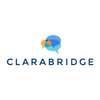Cruise Ships and Passenger Satisfaction


Cruises have become a major part of the tourism industry. Recent passenger figures suggest that although the cruise industry is growing, so is the competition. The industry's rapid growth has seen nine or more newly built ships catering to a North American market added every year since 2001, as well as others servicing European market. Smaller markets, such as the Asia–Pacific region, are generally serviced by older ships. This growth has made it imperative for cruise companies to delight their current customers so that they will return and refer new customers.
But achieving a high percentage of loyal customers is new for the cruise industry. Historically, the industry serves a large proportion of first time customers (about 50% in the North American market). As a result, companies are changing their focus from new customer acquisition to better understanding the elements that impact customer retention.
Considerable research has demonstrated that the key variable impacting retention is customer satisfaction. Customer satisfaction includes all elements of the passenger experience, before, during and after a cruise. Providing an exceptional passenger experience can be a key differentiator and increasingly has become a key element of business strategy for the cruise industry.
Here are the brands earning the highest score for passenger satisfaction among large cruise ships for 2010*: (see above chart)
Within organizations, customer satisfaction ratings can have powerful effects. They focus employees on the importance of fulfilling customers' expectations. When these ratings dip, they warn of problems that can affect sales and profitability. These metrics quantify an important dynamic. When a brand has delighted customers, it gains positive word–of–mouth marketing, which is both free and highly effective.
Expectations are a key factor behind satisfaction. When customers have high expectations and the reality falls short, they will be disappointed and will likely rate their experience as less than satisfying. For this reason, a luxury cruise might receive a lower satisfaction rating than a mid-priced cruise ship even though its facilities and service would be deemed superior in "absolute" terms. Here are detailed scores for selected areas contributing to passenger satisfaction for the top scoring brands: (see above chart)
Today's ships offer a new generation of onboard features and a world of innovation, including surf pools, planetariums, on–deck LED movie screens, golf simulators, water parks, demonstration kitchens, self–leveling billiard tables, multi–room villas with private pools and in–suite Jacuzzis, ice–skating rinks, rock–climbing walls, bungee trampolines and much more. Today's new ships also offer facilities to accommodate family members of all generations traveling together.
As a result of effectively marketing new feature–rich ships, passenger numbers have increased in record numbers. But the competition is getting more intense, with many new cruise ships entering the market in the next several years (orders through 2012 includes 26 new builds with 54,000 berths at a value of nearly $15 billion). So satisfying customers is becoming the ante just to stay in the game. The biggest success will come to those companies who understand their passengers and can keep all guests – new and returning – delighted with their experience.
With fantastic luxury and top–class entertainment onboard, today's cruises have seen the voyage itself being the attraction rather than the geographic cruise destinations. Gone are the days of catering for the elite – this industry is geared up for the masses and is now one of the fastest growing sectors of the travel industry.
The more demanding cruise passenger will want to engage with all of a ship's features and services. Companies will need to capture and store more data, yet access to it must be faster and more targeted in order to personalize the guest experience. As a result, voice–of–customer programs are becoming an important strategy for brands, and will receive even more focus in the next few years.
About Market Metrix
Clarabridge’s customer experience management platform helps hundreds of the world’s leading brands understand and improve the customer journey. Powered by the industry’s most sophisticated customer analytics engine, Clarabridge collects and transforms all forms of customer feedback into intelligence, allowing businesses to activate the voice of the customer across the enterprise. Industry leaders including PetSmart, United Airlines, L’Oréal USA, Virgin Active, Rackspace, and ADP use Clarabridge insights to inform key business decisions. The result: happy, loyal customers.
